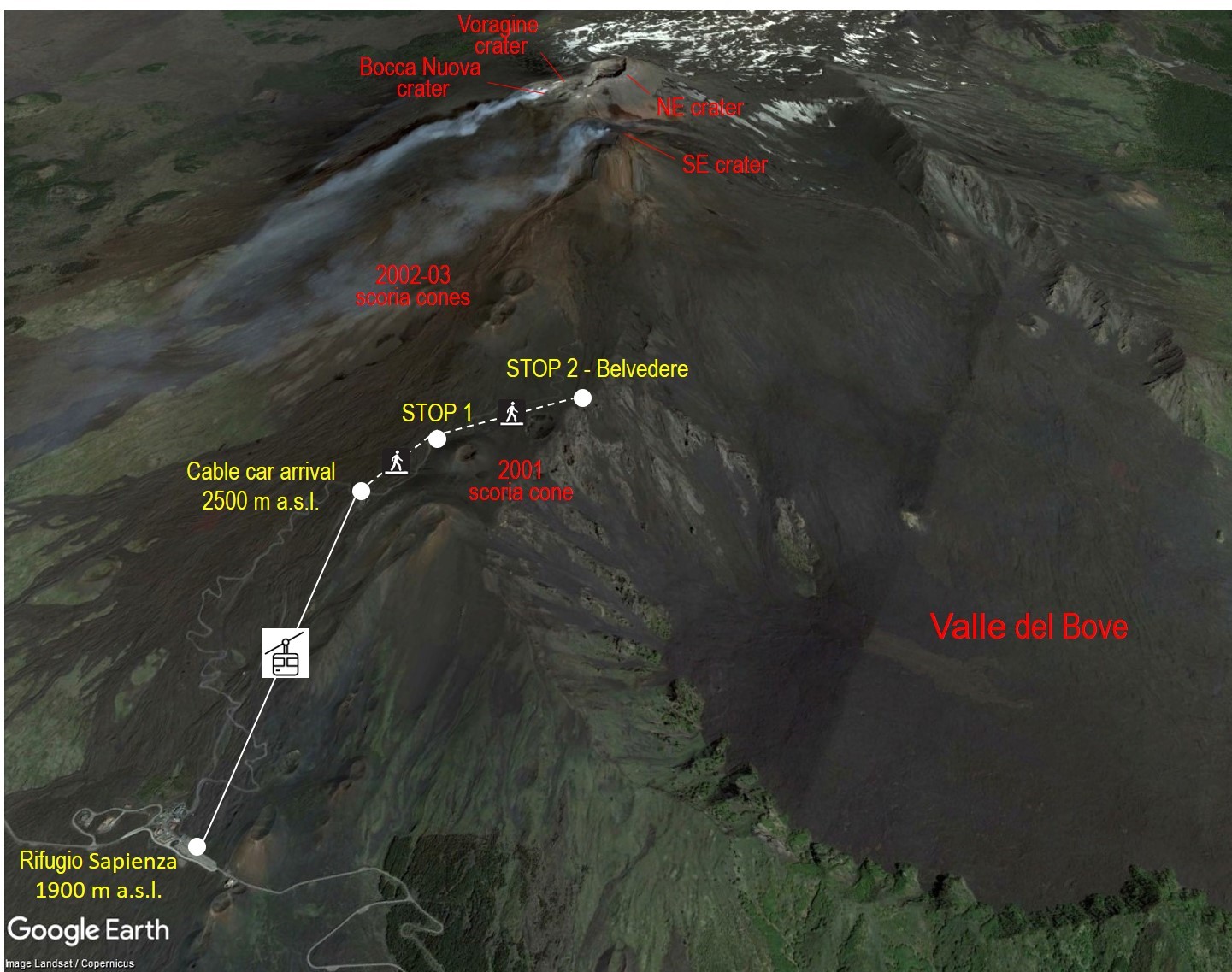Field trip to Mount Etna on 20 June 2024
Please note that the field trip is limited to 90 participants. The field trip registration is on a first come, first served basis.
Mount Etna is a persistently active volcano and one of the most active in the world, rising magnificently above the eastern coast of Sicily. For the frequent eruptions and the volcanic landforms, Mount Etna has been appointed a UNESCO world heritage site.
The field trip is focused on the main volcanological and geological features of the volcano exposed in the summit region (see Fig. 1).
- Transfer 1 – from Catania to Rifugio Sapienza (1900 m a.s.l.) with bus.
- Transfer 2 – from Rifugio Sapienza to about 2500 m a.s.l. with the cable car.
STOP 1 – from 2500 m a.s.l. we move by walking to observe the South-East summit crater (SEC) and the lava flows and pyroclastic deposits of recent volcanic activity. The cone of the South-East Crater has undergone exceptional growth in the past 25 years, and since 2021 is the highest point on Etna (about 3350 m as of early 2024).
STOP 2 – we move by walking to the Belvedere viewpoint (2650 m a.s.l.), reaching the western rim of the Valle Del Bove, a huge depression in the eastern flank of the volcano, to observe the explosive and effusive sequences formed between about 110 and 15 ka, which crop out along the inner walls of the valley. On the contrary, most of the recent historical lava flows streamed and piled up on the floor.
Figure 1 - Field itinerary and stop points. The line is the track of the itinerary that could change depending on weather conditions and/or volcanic activity.
Proper clothing
Field boots are mandatory for the field activity. Most of the excursion takes place at high elevation (up to about 2700 m) Therefore, during a sunny day, sunglasses and a hat or cap are useful. Since the weather may rapidly change and temperatures may drop sharply, warm clothes, gloves and rain jackets are recommended.
